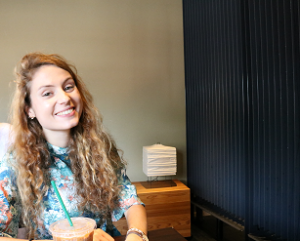0. Introduction
English below
0. はじめに
私はベルギーからの交換留学生で、建築工学の博士課程を取得するために、2016年9月に日本に来ました。
ピーエス株式会社でインターン生として働いています。
東京での最初の日をよく覚えているのですが、
ベルギーの夏はかなり涼しいので、私は比較的暖かな格好をしていました。
飛行機や空港内ではよく空調されており快適だったのですが、
一歩外へ出ると、2つのスーツケースと大きなバックパックを背負った私は、
暑くて湿った気候に圧倒されてしまいました。
9月は最も暑さの厳しい月ではないにしても、私は日本の夏に適応するのにかなり苦労し、
滞在初日から、新しい服を買わなくてはなりませんでした。
なぜなら、私が夏用に持ってきた服は、日本では秋に合う装いでしたから。
私はその暑さに対して不満を感じていましたが、
その時はまたもっと厳しい季節が来ることを知らなかったのです。
***
約1年後、6月7月が、暑い雨期という形で現れたとき、1回以上体調を崩しました。
日本の気候に慣れてきた時期にも関わらず。
突然の気候の変化(例えば、暑さ~寒さ、蒸し暑さ~乾燥)は私を本当に弱らせました。
さらには、8月になるとさらに信じられないほどの熱と湿気が来たのです。
幸いなことに、日本のほとんどの建物は、室内を快適に保つ空調システムが入っています。
ヨーロッパでは、エアコン空調はまだ一般的ではなく、特に住宅にはほとんど導入されていません。
日本と同等の緯度を持つスペインやイタリアなどの暑い国でさえも、建物に日陰を作り、窓を開けて換気をするのが通例です。
なので、日本では、空調システムがあらゆる建築に設置されていることに驚きましたし、
私はエアコンが作り出す新しい室内気候に適応するのにも少し時間を要しました。
肌と喉が乾燥していたので、私は室内の植物に頻繁に水を上げました。
また、涼しくて乾燥した室内と、暑く湿った屋外間の移動は時々、体に負担に感じていました。
***
こんな日本の夏気候の中で、
ピーエスの冷暖房ラジエータ PS HR-Cシステム(以下PS )は、
室内外の温度や湿度の変化をなめらかにし、体が徐々に温度に適応するのを助けます。
私はとあるPSの導入された建物に初めて訪れたとき驚きました。
PSからの涼しい放射が、とても心地よく気持ちよかったのです。
しかも、空気汚染や騒音被害がありません。
また、冷たいラジエータ表面に現れる水滴のかわいらしさは、
ピーエスデザインのユニークな特徴です。
これは、空気中の湿気が冷えたラジエータの表面にぶつかり、自然に結露したものです。
加えて、この現象は空気の湿度を自然かつ穏やかに安定させます。
“自然現象の利用”と、“自然との繋がり”はピーエスの快適哲学の対話のキーコンセプトです。
例えば、ショールームは代々木公園の隣にあり、リッチな公園の景観を楽しむことができます。
室内の植物は自然との視覚的な繋がりを強調し、開かれた窓からは新鮮空気が入ります。
ピーエスは、可能な限り自然換気を活用して、建物内の空気を入れ替えて、爽やかな気分を提供します。
密閉された室内に快適を作るのではなく、ピーエスは自然と室内の調和をデザインしているのです。
そのため、室内から外に出るときの感覚がとても自然で、気候の変化によるストレスがありません。
あなたが私のように、ピーエスの室内気候の快適さを体験することを願います。お楽しみください。

I am a Belgian exchange student who came to Japan in September 2016 to complete a Master in architectural engineering and work as an intern at PS Company for 4 months.
I remember my first day in Tokyo…
I was relatively warmly dressed because summers in Belgium are rather cool.
I could feel comfortable inside the plane and the airport because everything was well cooled thanks to the very efficient air conditioning systems.
But as soon as I went outside, carrying 2 suitcases and a big backpack, I felt really oppressed by the hot and humid weather.
I had a hard time adjusting to Japanese summer even though September is not the harshest month.
From the first days of my stay, I had to buy new clothes because the summer clothes I took were actually fit for Japanese Autumn.
I complained about the heat, but at that time I did not know that the worst was yet to come.
When June and July came, with their very hot temperatures and the rainy season, I got sick more than once even though I am rather resistant. The sudden climate changes (hot-cold, humid-dry) really weakened me. Finally, August came with its unbearable heat and humidity.
Fortunately, most buildings in Japan (public buildings and residential buildings) use air conditioning systems to provide comfortable indoor environments. In Europe, air conditioning is not popular, especially not for residential buildings. Even in hot countries such as Spain or Italy, which are around the same latitude as Japan, it is customary to shade the buildings and open the windows to ventilate. I was surprised to see the intensive use of AC in Japan. Therefore, I also took a while to adapt to those new indoor conditions resulting from AC systems. I had the skin and the throat drier, I had to water my interior plants much more often, etc.
In summer, the transition between inside the building (cool and dry) and outside (hot and humid) was sometimes so important than it could be very trying to go out. But PS system works in a very different way that enables a smooth transition and helps the body to gradually adapt to the temperature.
I was surprised when I visited one of the PS buildings for the first time. I found the cool radiations from PS system much more pleasant and comfortable than the heavy and cold air blown by a noisy air conditioner.
The radiators are clean and silent; they make no air or noise pollution.
One can be sensitive to the refine design of the radiators or not but the prettiness of the droplets resulting from the management of natural condensation of the air on the cold radiator surface is a unique characteristic of PS design that makes its signature.
In addition, this phenomenon is used to naturally and gently stabilize air humidity.
The use of natural phenomena and the connection with nature are key concepts of PS dialogue that contribute to comfort.
Their showroom for example, is located at the border of Yoyogi-park and enjoys an exclusive view on the park. Indoor plants emphasize this visual connection with nature and open windows bring fresh air inside.
PS relies on natural ventilation as much as possible to renew the air in the building and provide a refreshing feeling.
Rather than providing enclosed indoor environments, PS designs indoors that work in harmony with nature.
In addition to promote healthier indoor conditions, these concepts enable the body to adapt easily to the outside when it is time to leave the building.
I hope that, like me, you will have the opportunity to experience PS comfort. Please enjoy.


